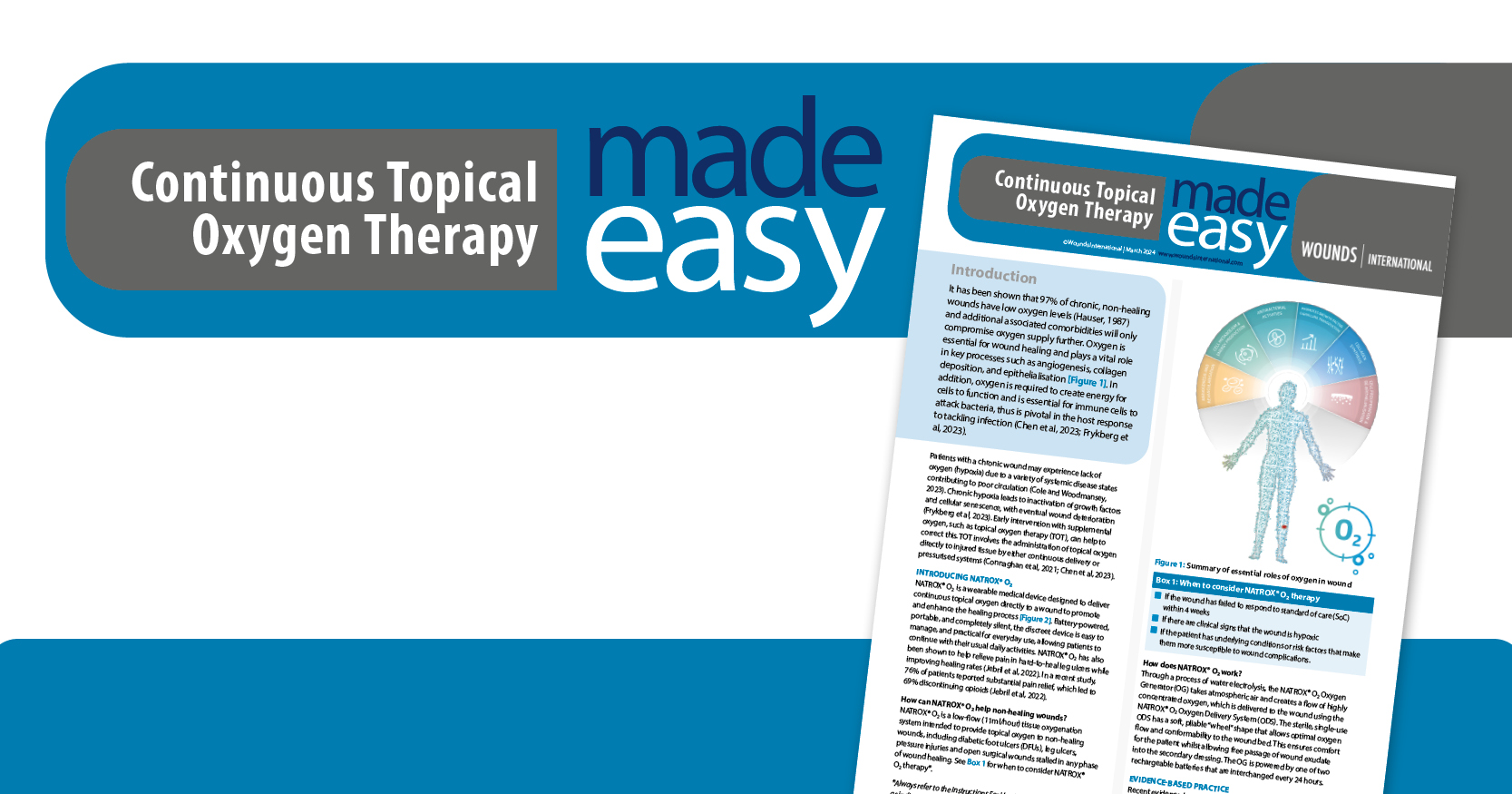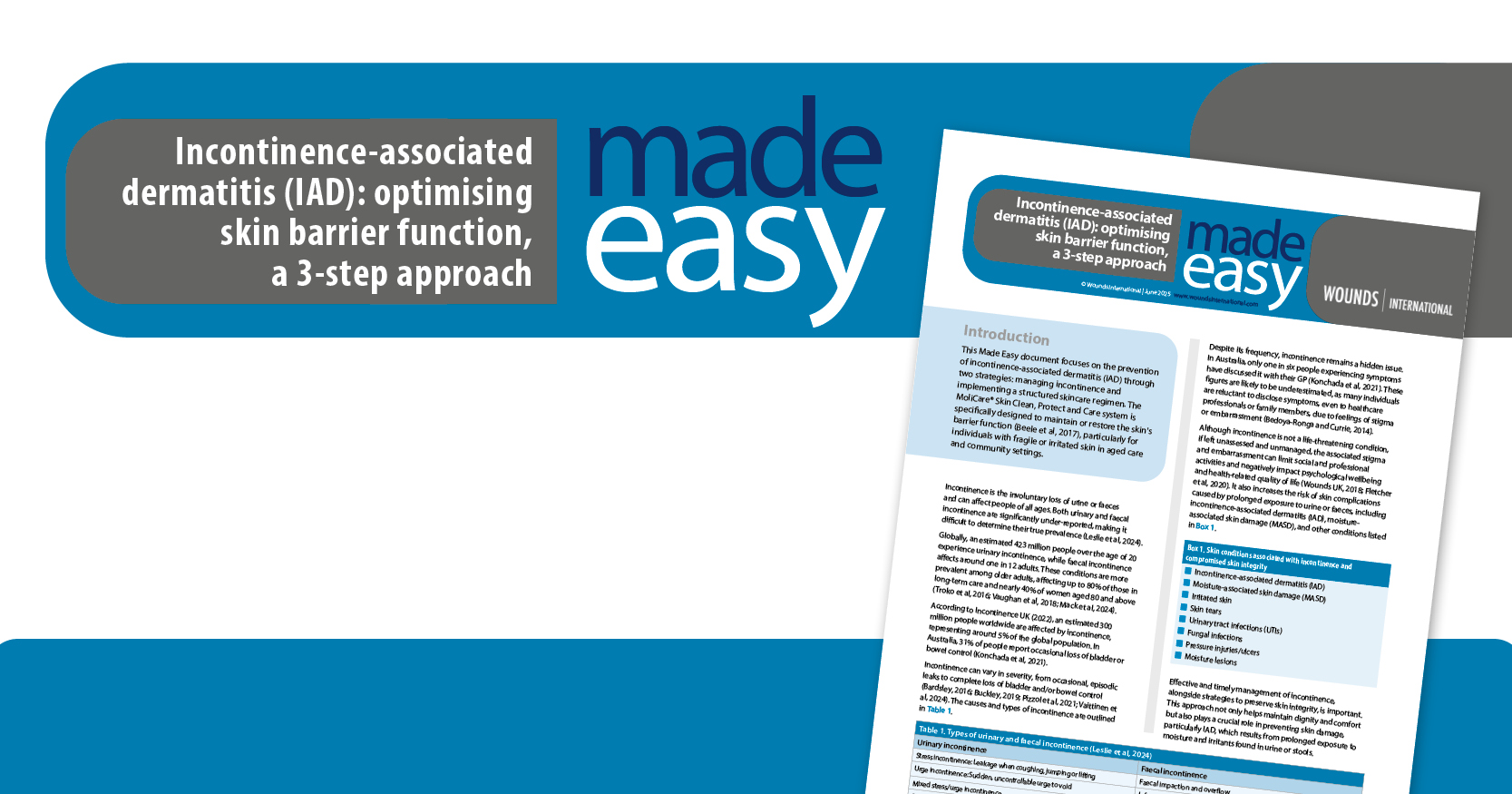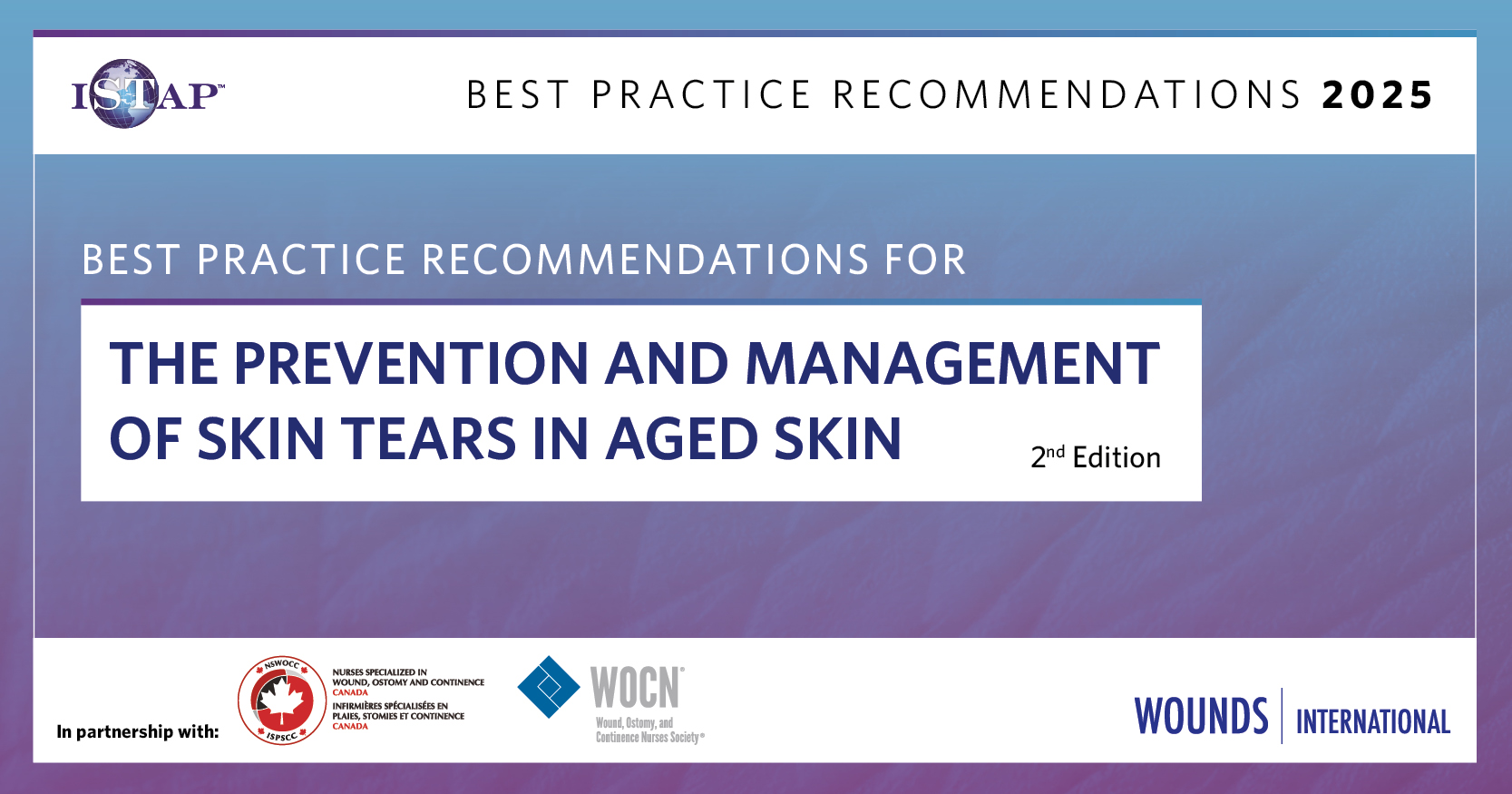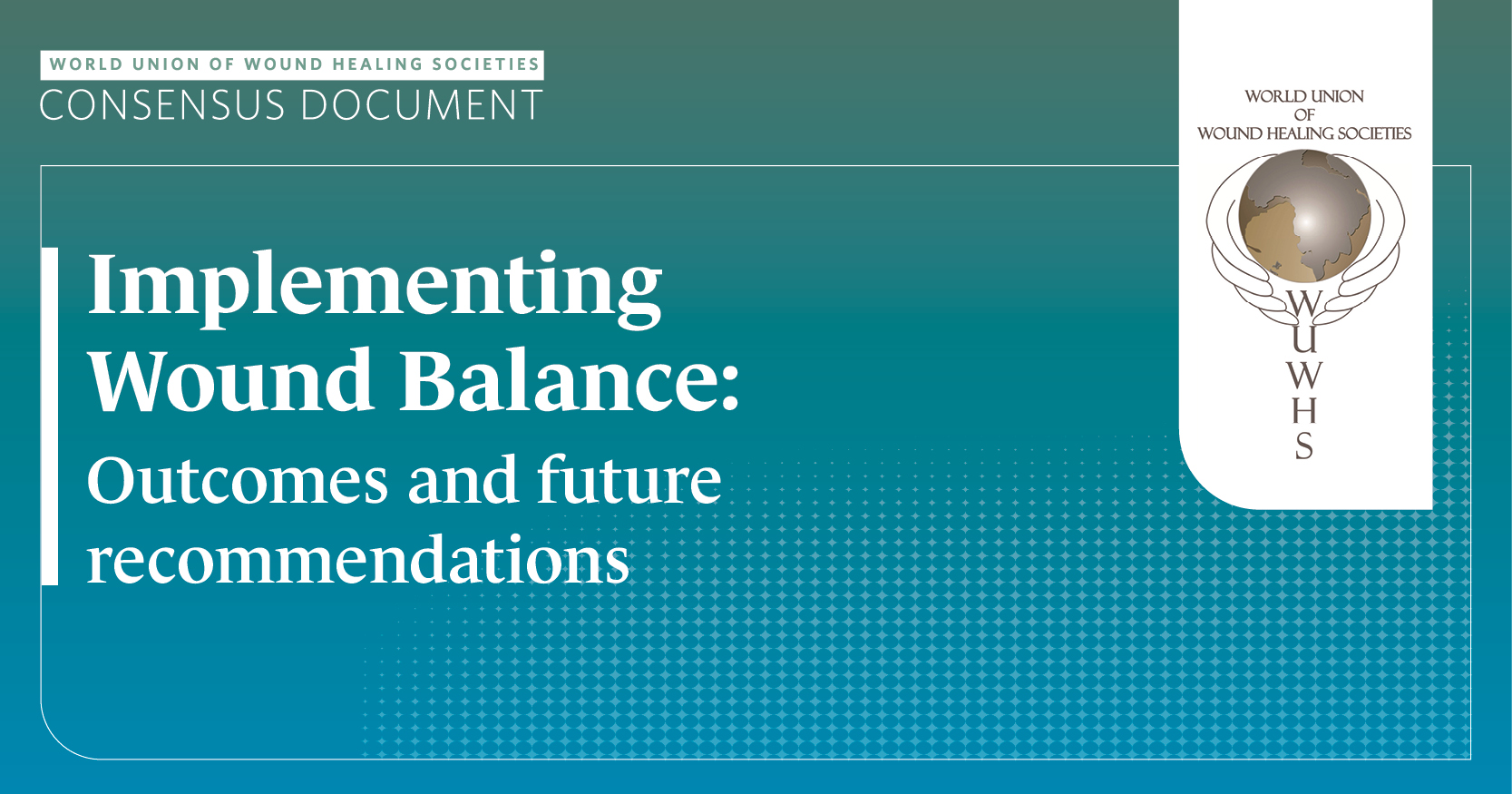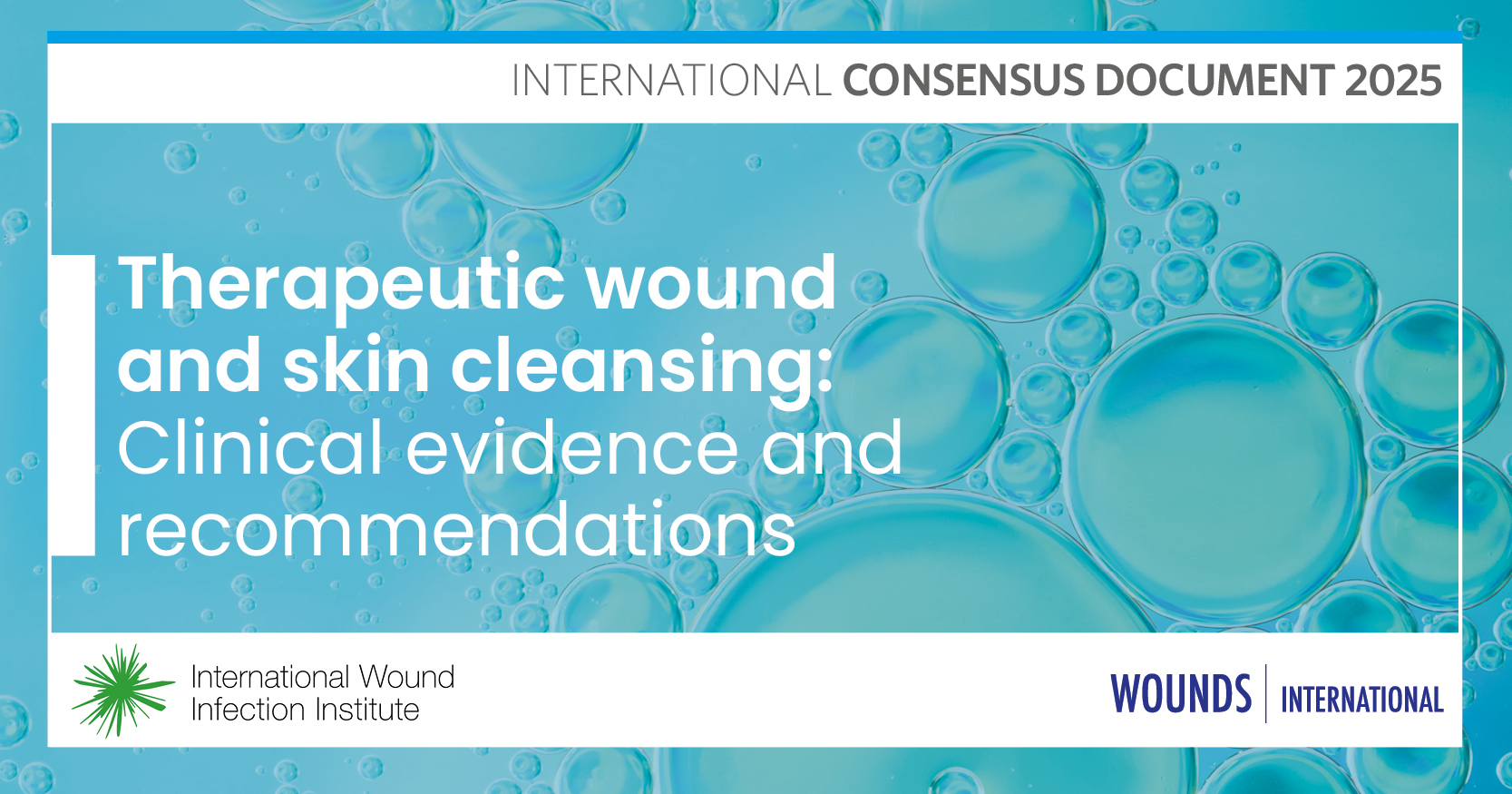Patients with a chronic wound may experience lack of oxygen (hypoxia) due to a variety of systemic disease states contributing to poor circulation (Cole and Woodmansey, 2023). Chronic hypoxia leads to inactivation of growth factors and cellular senescence, with eventual wound deterioration (Frykberg et al, 2023). Early intervention with supplemental oxygen, such as topical oxygen therapy (TOT), can help to correct this. TOT involves the administration of topical oxygen directly to injured tissue by either continuous delivery or pressurised systems (Connaghan et al, 2021; Chen et al, 2023).
Introducing NATROX® O₂
NATROX® O₂ is a wearable medical device designed to deliver continuous topical oxygen directly to a wound to promote and enhance the healing process [Figure 2]. Battery-powered, portable, and completely silent, the discreet device is easy to manage, and practical for everyday use, allowing patients to continue with their usual daily activities. NATROX® O₂ has also been shown to help relieve pain in hard-to-heal leg ulcers while improving healing rates (Jebril et al, 2022). In a recent study, 76% of patients reported substantial pain relief, which led to 69% discontinuing opioids (Jebril et al, 2022).
How can NATROX® O₂ help non-healing wounds?
NATROX® O₂ is a low-flow (11ml/hour) tissue oxygenation system intended to provide topical oxygen to non-healing wounds, including diabetic foot ulcers (DFUs), leg ulcers, pressure injuries and open surgical wounds stalled in any phase of wound healing. See Box 1 for when to consider NATROX® O₂ therapy*.
How does NATROX® O₂work?
Through a process of water electrolysis, the NATROX® O₂ Oxygen Generator (OG) takes atmospheric air and creates a flow of highly concentrated oxygen, which is delivered to the wound using the NATROX® O₂ Oxygen Delivery System (ODS). The sterile, single-use ODS has a soft, pliable “wheel” shape that allows optimal oxygen flow and conformability to the wound bed. This ensures comfort for the patient whilst allowing free passage of wound exudate into the secondary dressing. The OG is powered by one of two rechargeable batteries that are interchanged every 24 hours.
Evidence-based practice
Recent evidence-based guidelines call out the use of TOT and recognise the high-level of evidence supporting the technology. The Wound Healing Society (WHS) Guidelines update increased TOT to ‘Level 1’ Evidence in its updated DFU treatment guidelines; the guideline states that “topical oxygen has been shown to increase the incidence of healing and decrease the time to heal” (Lavery et al, 2023). The new International Working Group on the Diabetic Foot (IWGDF) Guidelines also gives TOT recognition as an accepted intervention when treating non-healing DFUs where standard of care (SoC) alone has failed (Chen et al, 2023). Similarly, the American Diabetes Association (ADA) gave TOT an “A Grade” evidence rating; panel findings state “multiple reasonably robust randomised controlled trials (RCTs), systematic reviews and meta-analyses provide supportive evidence for the more established TOTs” (ElSayed et al, 2023). The same rating was given in 2024 for this advanced wound care option (ElSayed et al, 2024).
A multicentre, open, RCT was carried out to investigate the effect of continuous topical oxygen therapy (cTOT) on healing rates in patients with hard-to-heal DFUs (i.e. non-responsive over four weeks; Serena et al, 2021). After a 4-week run-in period to exclude any wounds healing with SoC, this study demonstrated that cTOT could lead to a statistically significant improvement in healing rates in patients with DFUs that are resistant to healing with SoC alone. The patient group receiving NATROX® O₂ in conjunction with SoC had a 71% greater healing rate and a 73% greater average reduction in wound size than those receiving SoC alone (Serena et al, 2021).
It was also noted that interventions, such as cTOT, that can support faster healing and maintain care in the community rather than the hospital setting may lead to more cost‑effective care in the longer term (Serena et al, 2021). The high-quality RCT level evidence in DFUs is substantiated by the consistent positive outcomes recognised in many real-world case series for both DFUs and other chronic wounds (e.g. leg ulcers, pressure injuries, and other non-healing wounds), highlighting the extent of use and practical impact in real-world wound care settings. An extensive list of key evidence for all methods of topical oxygen can be found in Table 1.
When to use?
The chronic wound management algorithm [Figure 3] may help to guide clinicians using NATROX® O₂ on non-healing wounds (i.e. wounds not reducing in size >50% in 4 weeks by SoC alone).
How to apply?
1 It is important to practice good wound hygiene/wound bed preparation prior to NATROX® O₂ application. Firstly, cleanse the wound with normal saline or any preferred wound cleansing product and pat dry. Any necrotic/thick sloughy tissue should also be removed through the appropriate debridement method.
2 Remove the ODS from the sterile packaging and place the white side of the wheel directly onto the wound bed (with the beige shiny side facing upwards). A second kit can be ordered if the wound is larger than 10 x 10 cm/4 x 4 inches, or the location of the ODS wheel can be rotated to a new location on the wound bed at each dressing change.
3 Secure the tubing to the skin with tape that can be easily removed on fragile skin and position the tubing so that it runs towards the waist. Consider cushioning the tubing to prevent pressure damage to the skin. If using with compression, tubing can be fed out when wrapping.
4 For wounds with heavy exudate or wounds that require a filler, place these products over the ODS.
5 Apply an appropriate semi-occlusive dressing over the ODS — dressing choice is indicated by the amount of drainage and wound characteristics.
6 Change the ODS with each dressing change, and at least once a week. No product (e.g. cream, ointment or gel) should be applied to the wound bed under the ODS. Frequency of dressing changes should be based on the amount of exudate and the dressing manufacturer’s guidance, in accordance with clinical best practice.
7 Slide a fully charged battery into the OG, check the green light is blinking and connect the ODS tubing via the leur lock connector.
8 Place the OG in an appropriate place so the tubing does not kink and, if using a holster, make sure the green light is visible.
What to expect?
NATROX® O₂ can be administered by clinicians and patients/carers in clinical settings or at home and is compatible with most standard secondary dressings, including compression. Treatment is typically 8–12
weeks to complete healing, but this can vary from patient to patient. Generally, there are stages of healing that help to indicate the wound is on a healing trajectory, see Figure 4. Exudate levels usually increase for the first two weeks of cTOT treatment. Periwound protection via a tissue protectant or barrier product should be considered to prevent maceration. The ODS should be replaced with each dressing change (a minimum of once every 7 days). It may also be useful to consider continuing treatment for a short duration following closure to ensure that the skin has fully healed and to reduce risk of recurrence (Wounds International, 2018).
Case study
The following case study represents everyday use of NATROX® O₂ in promoting wound healing and relieving pain and, ultimately, helping to improve patient quality of life.
Patient presentation and history
A 55-year-old male with diabetes mellitus and high blood pressure was admitted for a heart transplant following a 2-month stay in intensive care. The patient developed a category/grade IV pressure injury 30 days after the transplant was carried out.
Management and outcomes
Previous treatment included hydromechanical debridement and commencement of negative pressure wound therapy (NPWT; -125mmHg, every 96 hours) and a white foam dressing. After 45 days of treatment, there was increased exudate and delayed wound healing with suspected biofilm. The wound was covered with devitalised and senescent tissue and the wound edges were macerated [Figure 5]. Dressings were becoming saturated prior to planned dressing changes and the wound was very painful (9 out of 10 on a Numerical Pain Rating Scale, where 10 is the worst pain imaginable). Due to the lack of wound progress, pain and periwound complications, the decision was made to discontinue NPWT.
The wound was cleansed with hypochlorous acid and mechanical debridement was performed. The NATROX® O₂ ODS was applied to the wound bed along with a polyabsorbent fibre dressing (based on ammonium polyacrylate polymer around an acrylic core) and polyurethane foam with silicone. During follow-up (+4 days), exudate and inflammatory signs had reduced [Figure 6]. The patient reported a significant reduction in pain and improved sleep and mobility, allowing him to continue with his usual daily activities. The decision was made to continue with the current treatment regimen. Dressing changes were planned for every 3–4 days.
After the fourth dressing change (+14 days), the wound showed no inflammatory signs and exudate had decreased significantly. Granulation tissue was present in the wound bed and the wound edges were contracting [Figure 7]. The wound was cleansed as before; the treatment plan was changed to: ODS application covered with a sucrose octasulfate (TLC-NOSF) dressing and polyurethane foam with silicone. After five days, the wound showed signs of epithelialisation and the patient had no wound pain. Treatment continued with ODS application, a sucrose octasulfate (TLC-NOSF) dressing and simple secondary dressing. The wound closed 5 days later [Figure 8].
*Always refer to the Instructions For Use (IFU) for the country of use as indications can vary from CE countries to the US.

